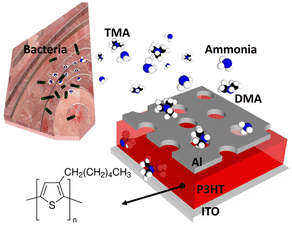When we order food at a restaurant or buy it from a grocery store, we expect that we are getting what is listed on the menu or label. But a growing body of evidence suggests that simply isn't the case.
A scandal in the UK broke out when it was discovered that some beef had been replaced by horse meat. Hot dogs in Malaysia may contain unexpected things, like buffalo meat. Cheese classified as Parmigiano-Reggiano is possibly fraudulent. In fact, food fraud appears to be a particular problem in the seafood industry, where cheap fish is regularly substituted for more expensive fish.
Fraud isn't the only problem with seafood. Freshness is another concern, not only because old fish is of poorer quality and smells bad but because it can make people sick. For customers who want raw fish, such as sushi, freshness is absolutely mandatory. However, old fish is still problematic even if cooked. That's because the bacteria responsible for spoiling the fish produce molecules called histamines that make people ill and are not destroyed by cooking.
Fish freshness is determined by measuring volatile gases -- primarily ammonia, dimethylamine, and trimethylamine -- referred to as total volatile basic nitrogen (TVB-N). The global standard for TVB-N detection requires complex chemistry and takes four hours, which in practice means that most fish freshness inspection is done visually, which is prone to error. So a group of Taiwanese researchers developed a semiconductor sensor that detects fish freshness in one minute.
 The diagram on the right depicts how the sensor works. The sensor contains tiny holes that allow for the diffusion of gases. When nitrogenous gases enter the device, they chemically react with a semiconducting polymer called P3HT. (The reaction is reversible, so the sensor is reusable.) This causes an electrical current to fluctuate, and the magnitude of the fluctuations indicates the concentration of the gases. In this manner, the device "sniffs" fish and accurately determines the TVB-N. The smellier the fish, the older it is.
The diagram on the right depicts how the sensor works. The sensor contains tiny holes that allow for the diffusion of gases. When nitrogenous gases enter the device, they chemically react with a semiconducting polymer called P3HT. (The reaction is reversible, so the sensor is reusable.) This causes an electrical current to fluctuate, and the magnitude of the fluctuations indicates the concentration of the gases. In this manner, the device "sniffs" fish and accurately determines the TVB-N. The smellier the fish, the older it is.
When the researchers compared their new system to the "gold standard," they found that their results correlated nicely with those produced by the older system. For tilapia, their sensor was more accurate at detecting spoilage than the gold standard. And, it reduced the amount of time needed to determine fish freshness from 4 hours (240 minutes) to 1 minute, a decrease of 99.6%. The graph below depicts the ability of their sensor to measure increases in nitrogenous gases as various types of fish age.
 The benefits of their new sensor are quite obvious. Since the authors claim it is cheap to manufacture, commercialization should not be an issue. That means sensors could be deployed at multiple points in the fish supply chain to monitor freshness. And because sensors are more accurate than visual inspection, widespread adoption of their tool could greatly increase the quality and safety of seafood.
The benefits of their new sensor are quite obvious. Since the authors claim it is cheap to manufacture, commercialization should not be an issue. That means sensors could be deployed at multiple points in the fish supply chain to monitor freshness. And because sensors are more accurate than visual inspection, widespread adoption of their tool could greatly increase the quality and safety of seafood.
Farewell, smelly fish.
Source: Liang-Yu Chang, et al. "One-Minute Fish Freshness Evaluation by Testing the Volatile Amine Gas with an Ultrasensitive Porous-Electrode-Capped Organic Gas Sensor System." ACS Sens 2(4): 531-539. Published: 11-Apr-2017. DOI: 10.1021/acssensors.6b00829




